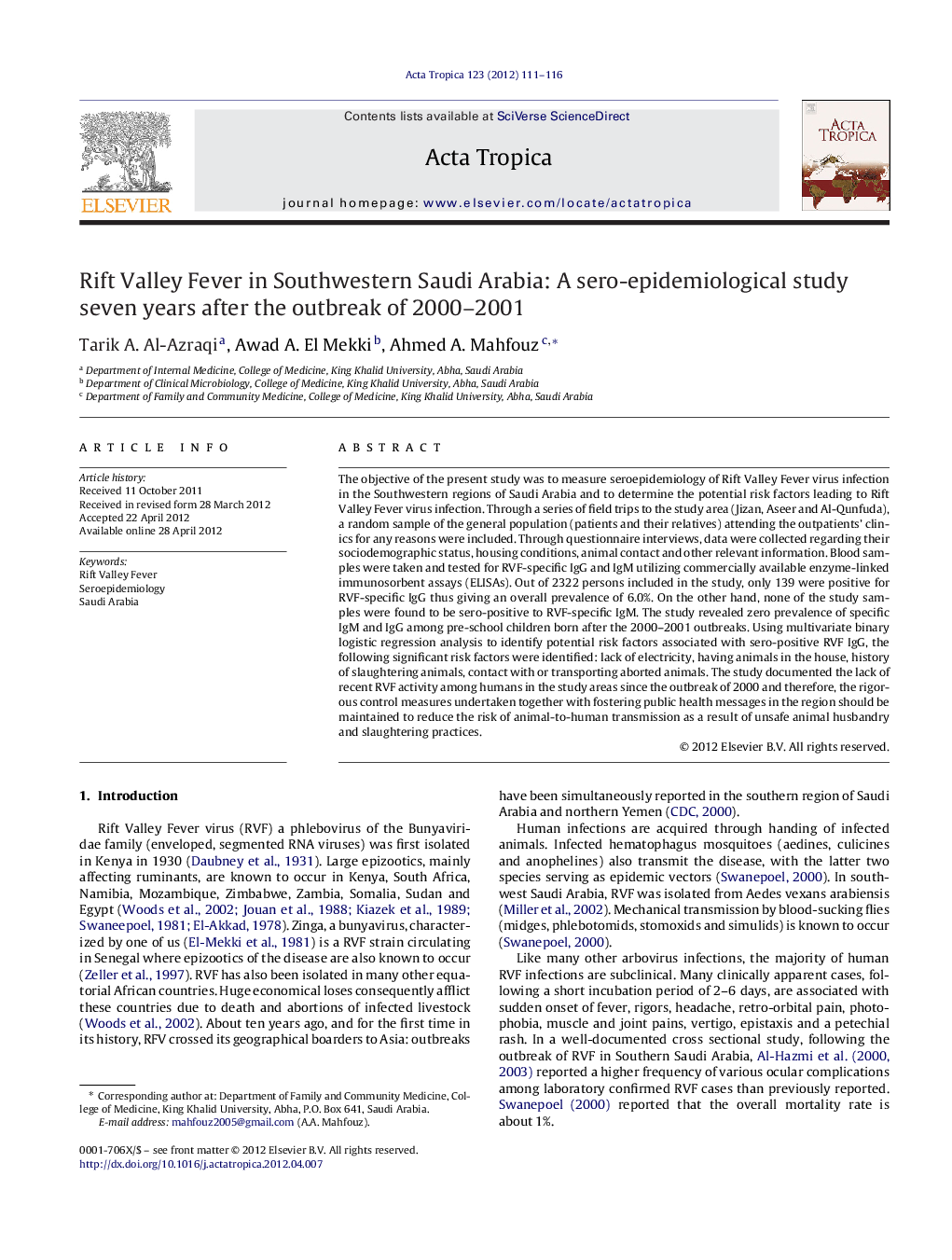| کد مقاله | کد نشریه | سال انتشار | مقاله انگلیسی | نسخه تمام متن |
|---|---|---|---|---|
| 3393913 | 1221418 | 2012 | 6 صفحه PDF | دانلود رایگان |

The objective of the present study was to measure seroepidemiology of Rift Valley Fever virus infection in the Southwestern regions of Saudi Arabia and to determine the potential risk factors leading to Rift Valley Fever virus infection. Through a series of field trips to the study area (Jizan, Aseer and Al-Qunfuda), a random sample of the general population (patients and their relatives) attending the outpatients’ clinics for any reasons were included. Through questionnaire interviews, data were collected regarding their sociodemographic status, housing conditions, animal contact and other relevant information. Blood samples were taken and tested for RVF-specific IgG and IgM utilizing commercially available enzyme-linked immunosorbent assays (ELISAs). Out of 2322 persons included in the study, only 139 were positive for RVF-specific IgG thus giving an overall prevalence of 6.0%. On the other hand, none of the study samples were found to be sero-positive to RVF-specific IgM. The study revealed zero prevalence of specific IgM and IgG among pre-school children born after the 2000–2001 outbreaks. Using multivariate binary logistic regression analysis to identify potential risk factors associated with sero-positive RVF IgG, the following significant risk factors were identified: lack of electricity, having animals in the house, history of slaughtering animals, contact with or transporting aborted animals. The study documented the lack of recent RVF activity among humans in the study areas since the outbreak of 2000 and therefore, the rigorous control measures undertaken together with fostering public health messages in the region should be maintained to reduce the risk of animal-to-human transmission as a result of unsafe animal husbandry and slaughtering practices.
An overall prevalence of RVF-specific IgG of 6.0% and zero% of specific IgM was found. The study documented the lack of recent RVF activity among humans.Figure optionsDownload as PowerPoint slideHighlights
► RVF-specific IgG was found in 6.0%.
► RVF-specific IgM was not detected.
► The study Indicated lack of recent virus activity among humans.
► History of slaughtering animals and contact with or transporting aborted animals were major risk factors for acquiring RVF infection.
► Control measures taken by Governmental agencies were effective.
Journal: Acta Tropica - Volume 123, Issue 2, August 2012, Pages 111–116